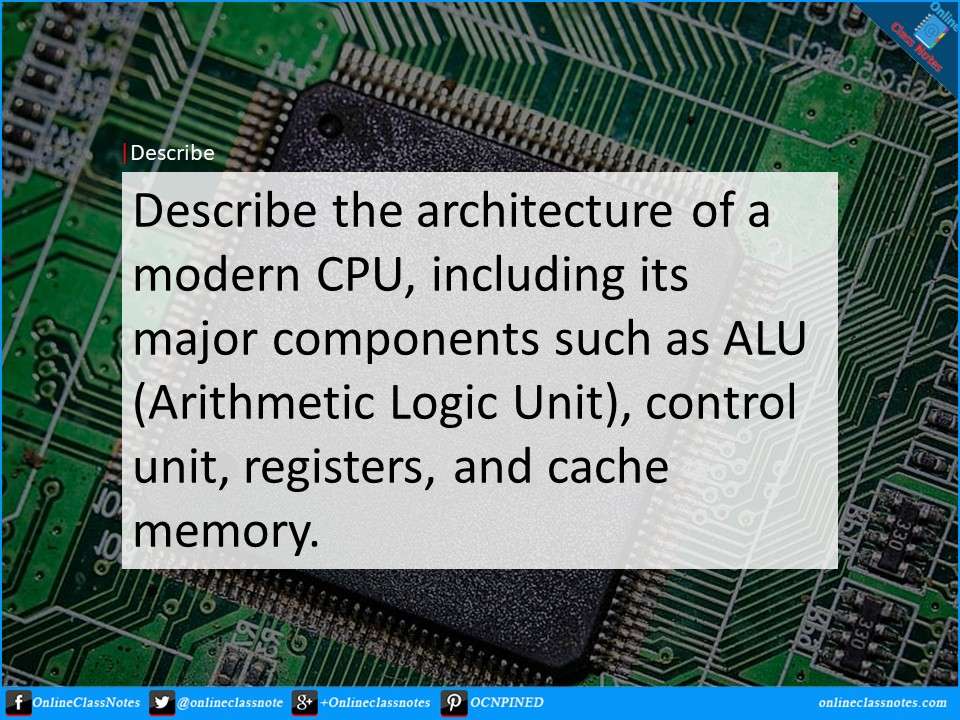The architecture of a modern CPU (Central Processing Unit) is designed to efficiently execute instructions and process data.
Major components of CPU
Arithmetic Logic Unit (ALU)
The ALU performs arithmetic operations (such as addition, subtraction, multiplication, and division) and logical operations (such as AND, OR, NOT) on data. It carries out these operations based on the instructions provided by the control unit. The ALU is the primary component responsible for executing computational tasks.
Control Unit
The control unit coordinates the operation of the CPU by directing the flow of data and instructions between various components. It fetches instructions from memory, decodes them, and controls the execution of operations within the CPU. The control unit ensures that instructions are executed in the correct sequence and that data is processed accurately.
Registers
Registers are small, high-speed storage units located within the CPU. They are used to store data temporarily during the execution of instructions. Registers are faster to access than main memory, allowing the CPU to perform operations more quickly. Common types of registers include
- Program Counter (PC): Keeps track of the memory address of the next instruction to be fetched.
- Instruction Register (IR): Stores the currently fetched instruction.
- Memory Address Register (MAR): Holds the memory address of data to be accessed.
- Memory Data Register (MDR): Stores data fetched from or to be written to memory.
- General-Purpose Registers: Used for storing intermediate results and operands during computation.
- Cache Memory: Cache memory is a small, high-speed memory located within the CPU or very close to it. It stores frequently accessed data and instructions to reduce the time required to access them from main memory. Cache memory is organized into multiple levels, with each level offering progressively larger storage capacity but slower access speeds. The cache helps improve CPU performance by minimizing the latency associated with accessing data from main memory.
- L1 Cache: The smallest and fastest cache, typically divided into separate instruction and data caches.
- L2 Cache: A larger cache that serves as a secondary cache, often shared between multiple CPU cores.
- L3 Cache: A higher-level cache shared among multiple CPU cores or even across a whole processor package.
These components work together to execute instructions and process data efficiently within the CPU. The control unit coordinates the flow of instructions, while the ALU performs computations and logical operations. Registers provide temporary storage for data and instructions, and cache memory helps reduce memory access latency, improving overall CPU performance.
